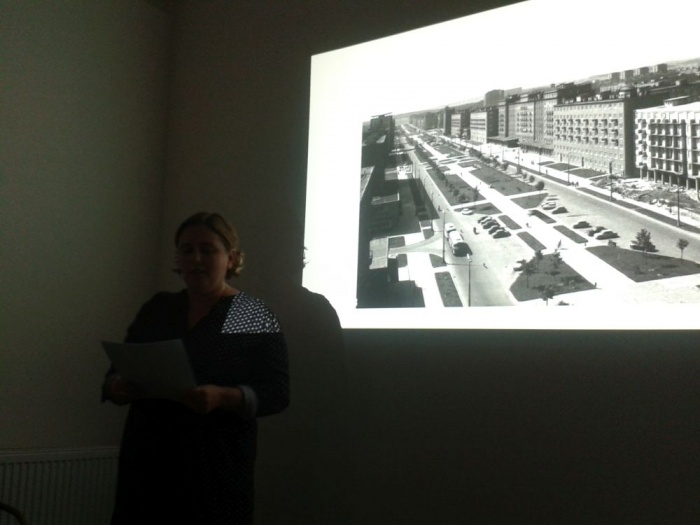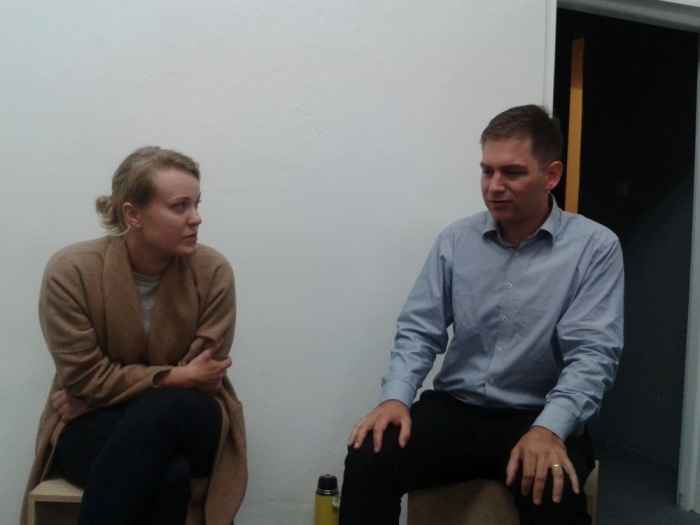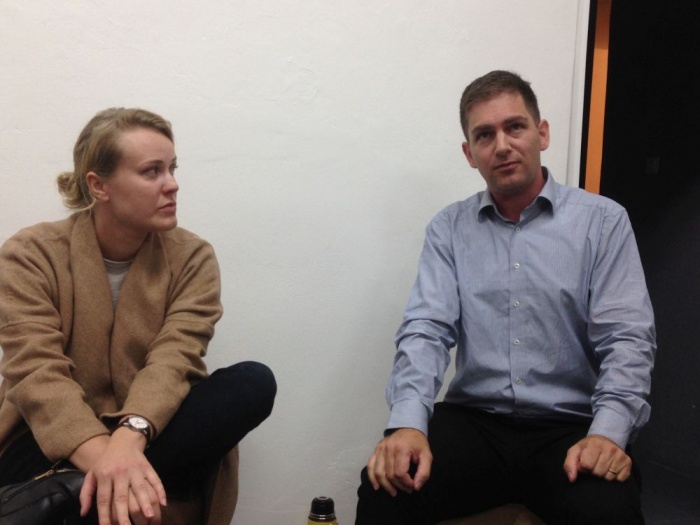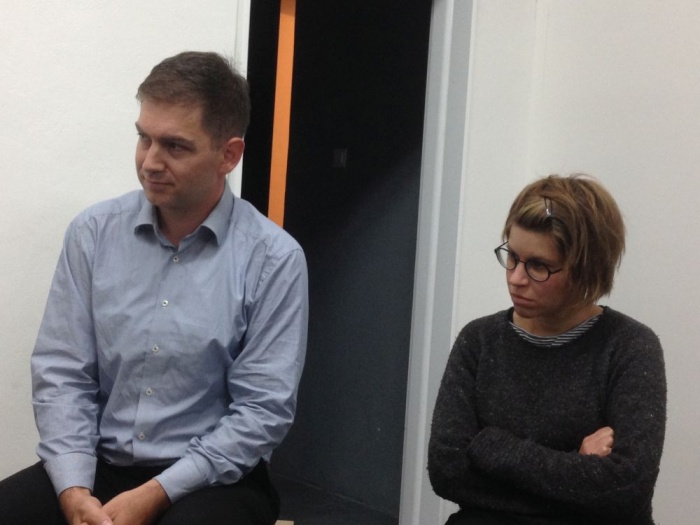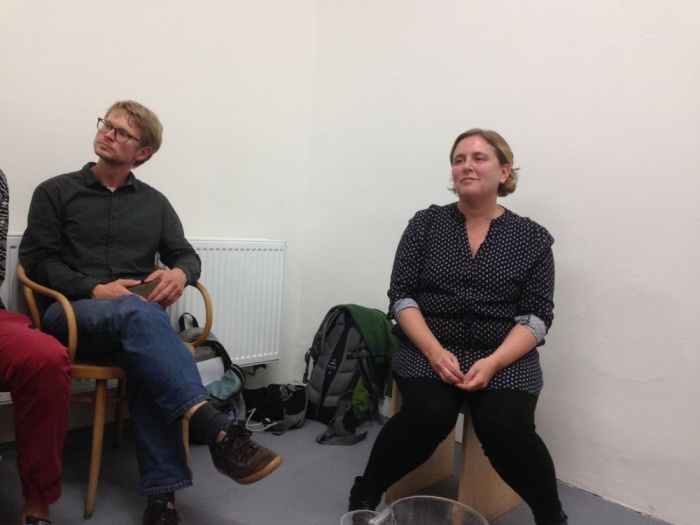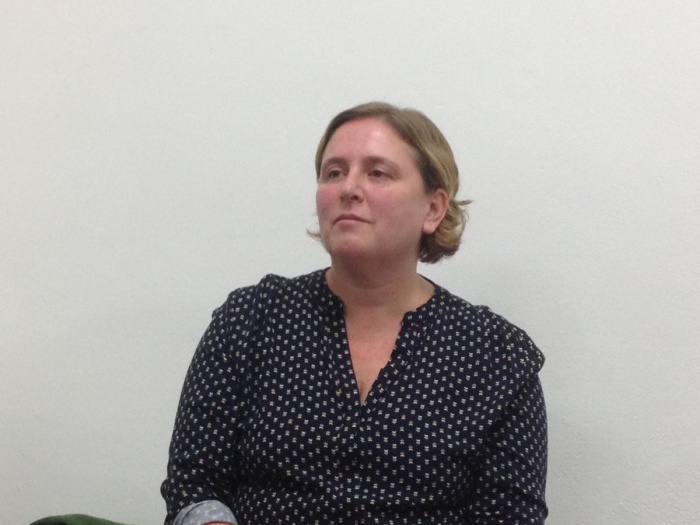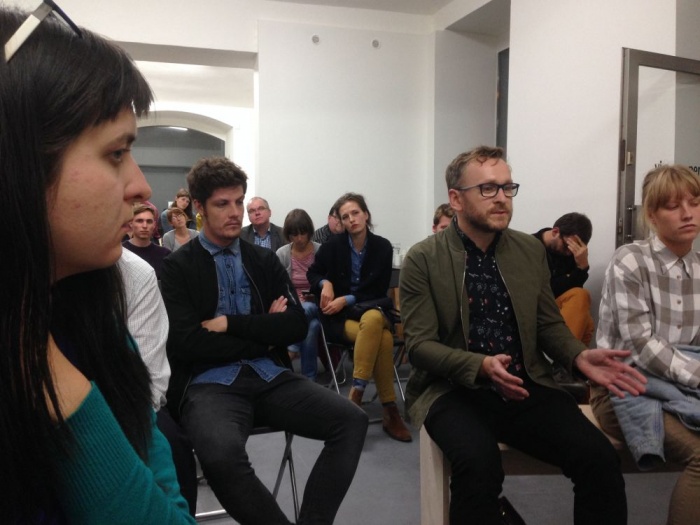How The Past Informs the Future of Czech “Sídliště”
{~ '2017-09-12 00:00:00' | amDateFormat: 'D/M' ~} {~ '19:00' ~}

A short talk by the American architectural historian Kimberly Elman Zarecor and a follow-up discussion will together map how large housing estates (“sídliště”) in the Czech Republic are changing today and uncover its potential for contemporary comfortable and environment-friendly living in the city. One of the topics for the discussion will be also to what extent these neighbourhoods represent alternatives to the neoliberal approach to building new neighbourhoods that are financially unaffordable for most current residents.
“Fifteen years ago, when I first started my research on post-war housing in Czechoslovakia, no one was talking about the history of prefabricated apartment towers (“paneláks”) and the large housing estates (“sídliště”) into which they were composed. This was a topic unworthy of serious academic study. My work started to fill gaps in our knowledge and also created a framework in which to talk about this history by using industrialization and standardization as productive architectural tropes. Now there is so much research that it is hard to keep track of it all. In this talk, I want to reflect on how my vantage point as an outsider looking to the Czech Republic from the United States informs what I understand about “sídliště” in the past and how they will transform in the coming decades. Long-term infrastructure planning and socialist approaches to urbanism created cities that were constantly trying to reach the promised better future in which the goals of socialism would be achieved. In the process, and only after many years of struggling, these cities and their post-war neighborhoods managed to create urban-scale infrastructural systems that have now outlived socialism and continue to help Czech cities prosper. “Sídliště,” especially in large and economically vibrant cities like Prague and Brno, have the potential to become a model for affordable, community-oriented, public transit friendly urban neighborhood design. For young people looking to purchase homes, they are already a popular alternative to the neoliberal enclaves of expensive and inward-looking speculative housing that is often the only new construction in many Czech cities. This resurgence in demand for panelák apartments certainly defies the expectations that people had in 1990s that these buildings would soon be torn down. But when real estate developers have no responsibilities to the community beyond their paying customers (a situation Americans know well), there is new appeal in the communist-era model of integrated neighborhood planning with housing near schools, shops, restaurants, public spaces, and transit options.” K. E. Zarecor
Kimberly Elman Zarecor is Associate Professor of Architecture at College of Design, Iowa State University. Her 2011 book with University of Pittsburgh Press, “Manufacturing a Socialist Modernity: Housing in Czechoslovakia, 1945-1960,” focuses on the intersection of architects, housing design, and the state apparatus in the early years of Communist Party rule. An on-going project considers the post-war development of Ostrava, a Czech industrial city with a coal and steel industry dating back to the early nineteenth-century.
Eva Novotná is an architectural historian, focusing mainly on the history of the architecture of the second half of the 20th century and the history of large housing estates with an emphasis on experimental construction. She lectured on the history of architecture at the Institute of Christian Art History at the Catholic Theological Faculty of Charles University in Prague. She participated in the grant project “Paneláci” (Prefabricated Housing Estates in the Czech Republic as Part of the Urban Environment: An Evaluation and Presentation of Their Housing and Living Potential) in 2013–2017.
Matěj Spurný is a Czech historian, whose field of interest lies in social history after 1945, nationalism and multi-ethnicity in the Czech lands in the twentieth century, history of modern European dictatorships, urbanism and historic building conservation. He works at the Institute of Economic and Social History, Faculty of Arts at Charles University in Prague, and Institute of Contemporary History, Czech Academy of Sciences, where he is a member of the working group focusing on urban history. His last book “Most do budoucnosti. Laboratoř socialistické modernity na severu Čech” (Making the Most of Tomorrow: A Laboratory of Socialist Modernity in North Bohemia, 2016) describes the destruction of the historical city of Most and the construction of a new one in broader political, economic, technological, social and cultural relationships during the era of state socialism.
Moderator: Michaela Janečková is an architectural historian and a PhD student at the Academy of Arts, Architecture and Design in Prague. She focuses primarily on the post-war architecture. In past she worked for the Centre for Central European Architecture (CCEA) and currently she is teaching at ARCHIP. She participated in the grant project “Paneláci” (Prefabricated Housing Estates in the Czech Republic as Part of the Urban Environment: An Evaluation and Presentation of Their Housing and Living Potential) in 2013–2017.
